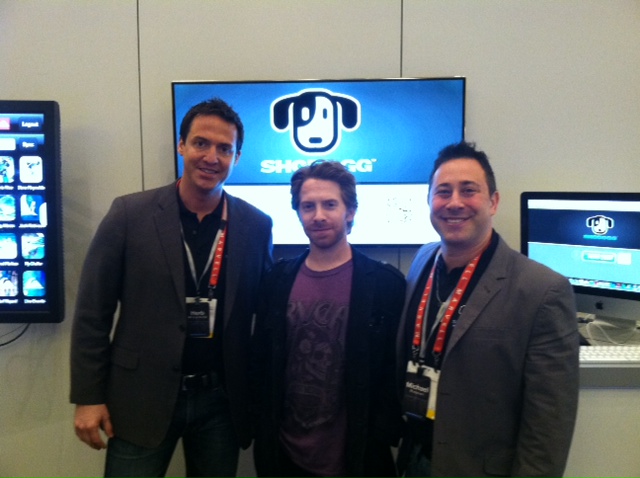Shodogg Tosses Mobile Video to TV Screens
LAS VEGAS—The rise of smart TVs has led to an explosion of companies trying to solve the problem of smart TVs. The problem is that the smart TV app world is fractured, and content owners and broadcasters likely don’t relish the chance to build custom apps for every platform. One company offering a solution is Shodogg.
Tiny Shodogg was only created in May, 2011, born from the idea that there should be an easier way to send content from the smartphone to the television. We spoke to CEO and co-founder Herb Mitschele, who until recently was an executive at Jakks Pacific, a toy company.
The Shodogg solution is a bridge, really, that carries video to the TV. It doesn’t touch the video player, branding, or advertising, so it’s friendly to content owners.
To use Shodogg, the user needs to download the Shodogg app on a smarphone, and then pair the phone with an internet-enabled TV. This can be done by downloading a Shodogg app to the TV or by connecting to the Shodogg site through the TV’s browser, then entering a code.
Once paired, users can send content from the Shodogg app to the TV or from apps that use Shodogg technology. That technology exists as an overlay, taking the mobile content and porting it to the TV as-is.
Mitschele notes that some similar solutions take a short-term approach, letting users stream any online content to a TV without the content owner’s permission. Shodogg aims for the long-term, respecting content owners and only working with those that want to take part. The company has one premium partner so far: Quiksilver, which produces surfing and skateboarding videos. The Shodogg app is otherwise populated by videos from YouTube and other sites that freely share content through APIs. Quiksilver isn’t the only big name attached to Shodogg: actor Seth Green is an early investor.

Left to right: Herb Mitschele (CEO, co-founder), Seth Green (investor), and Michael Rinzler (president, co-founder) are on-hand at CES for the public debut of Shodogg.
To experience Shodogg, users will soon be able to download the Shodogg app or the Quiksilver app. Mitschlele thinks that major sporting events will provide the springboard Shodogg needs, and will get users past the hurdle of pairing their phones with their TVs. Major surfing events are coming up in August and September, he notes. One novel feature is that multiple phones can connect to one TV, so that a group of friends (Shodogg is aiming at the college market) can all share videos together. It also includes sharing features that let friends share playlists. If a viewing session is interrupted, the viewer can resume at the same spot on another device.
Besides working on content deals, Shodogg is now creating its library of apps for various devices. It should have iOS, Android, and Windows Phone apps by spring and an Xbox 360 app by early July. It will release its SDK in August, so that content owners can create their own Shodogg channels. The alpha version of the app is only available now on an invite-only basis. In the future, Mitschele hopes TV and device makers will build the technology directly into their platforms.
Is Shodogg right? Are content owners eager to avoid creating their own connected TV apps? If so, this dog could be fetching happily for years to come.
Related Articles
Changing its focus from consumer to B2B, Shodogg has released a second-screen solution called ScreenDirect.
18 Jan 2013
ZappoTV apps bridge the gap between smartphones and TVs; plans hunt for investors and premium partners.
11 Jan 2012
CEA research director says gadgets at this year's Consumer Electronics Show will boast simpler, better user interfaces and emphasize device personalization
08 Jan 2012